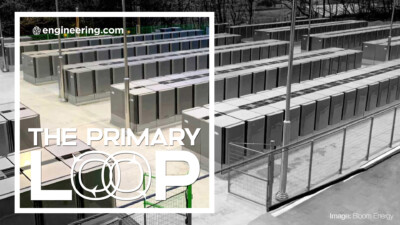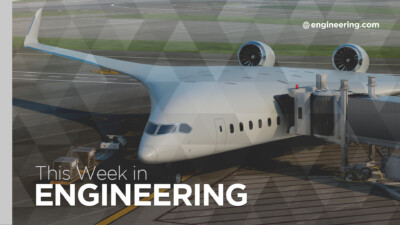Bramble Energy wants to revolutionize fuel cells using printed circuit techniques.
Hydrogen fuel cell stacks have been produced commercially since the 1960s, mainly for military and space exploration tasks. Handmade, delicate and expensive, the mass production problem has been a major inhibitor to the widespread adoption of fuel cells as a mass-market power source. U.K.-based Bramble Energy has developed a manufacturing technique for hydrogen fuel cell stacks that uses an existing and well-optimized technology in the electronics industry: printed circuit manufacturing.
Access all episodes of This Week in Engineering on engineering.com TV along with all of our other series.
* * *
Episode Transcript:
Hydrogen fuel cells are a very interesting technology in the age of climate change. Their basic operating principle is remarkably simple: combine gaseous hydrogen and oxygen, and the byproducts are water and electric power, both useful commodities.
Experimentation has been ongoing for decades, and commercial units were first designed and built for the Gemini space program in the 1960s, and were used successfully in the Apollo moon landings and in the Space Shuttle program.
They work, but they have an important drawback: they are very expensive to manufacture.
Mass production of hydrogen fuel cells for widespread power generation has proven difficult, but U.K.-based Bramble Energy has developed an interesting solution: fuel cell stacks based on printed circuit technology. While the company has not disclosed exactly how PCB technology is used in their processes, the company believes that the new production system will allow low-cost, rapid manufacturing of unique and customized fuel cells, leveraging a printed circuit board manufacturing capacity that is available worldwide.
The scalability of the technology is considerable, with Bramble pursuing applications as broad as maritime shipping, trucks and buses as well as small portable power generation. Fuel cells are particularly attractive for heavy truck and bus applications, where space and weight capacity are available for pressurized hydrogen gas storage, and where quick refuelling time is important.
To develop these applications, Bramble Energy has joined the U.K.-based Hydrogen Electric Integrated Drivetrain Initiative, along with Equipmake, Aeristech and the University of Bath. 6.3 million pounds of government funding will be matched by 12.7 million pounds of industry money to develop a hydrogen double-decker bus integrating Bramble’s printed circuit-based fuel cell technology.
Equipmake will supply motor power electronics and the battery management system, while Aeristech will be responsible for a new, high-efficiency air compressor. The entire powertrain system will be developed using simulation at the University of Bath.
Range limitation is a serious drawback to pure battery electric vehicles, making full decarbonization of transportation very difficult to achieve with current battery technology and charging infrastructure. Low-cost hydrogen fuel cells may be the key to commercialization of fuel cell technology that has already been extensively tested in the aerospace, marine, off-highway and commercial vehicle space.



